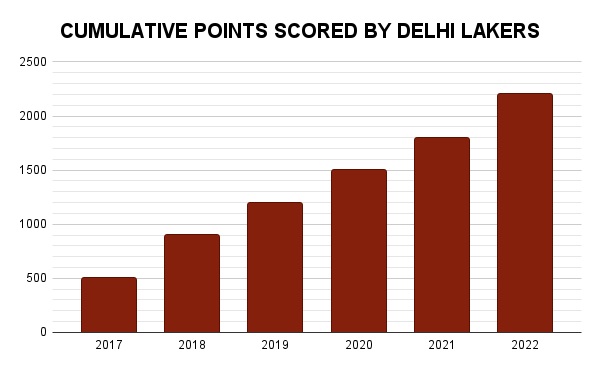Events & Promotions
|
|

GMAT Club Daily Prep
Thank you for using the timer - this advanced tool can estimate your performance and suggest more practice questions. We have subscribed you to Daily Prep Questions via email.
Customized
for You
Track
Your Progress
Practice
Pays
Not interested in getting valuable practice questions and articles delivered to your email? No problem, unsubscribe here.
- Nov 19
12:30 PM EST
-01:30 PM EST
Learn how Keshav, a Chartered Accountant, scored an impressive 705 on GMAT in just 30 days with GMATWhiz's expert guidance. In this video, he shares preparation tips and strategies that worked for him, including the mock, time management, and more - Nov 18
11:00 AM PST
-12:00 PM PST
Join us in a live GMAT practice session and solve 30 challenging GMAT questions with other test takers in timed conditions, covering GMAT Quant, Data Sufficiency, Data Insights, Reading Comprehension, and Critical Reasoning questions. - Nov 20
01:30 PM EST
-02:30 PM IST
Learn how Kamakshi achieved a GMAT 675 with an impressive 96th %ile in Data Insights. Discover the unique methods and exam strategies that helped her excel in DI along with other sections for a balanced and high score. - Nov 22
11:00 AM IST
-01:00 PM IST
Do RC/MSR passages scare you? e-GMAT is conducting a masterclass to help you learn – Learn effective reading strategies Tackle difficult RC & MSR with confidence Excel in timed test environment - Nov 23
11:00 AM IST
-01:00 PM IST
Attend this free GMAT Algebra Webinar and learn how to master the most challenging Inequalities and Absolute Value problems with ease. - Nov 24
07:00 PM PST
-08:00 PM PST
Full-length FE mock with insightful analytics, weakness diagnosis, and video explanations! - Nov 25
10:00 AM EST
-11:00 AM EST
Prefer video-based learning? The Target Test Prep OnDemand course is a one-of-a-kind video masterclass featuring 400 hours of lecture-style teaching by Scott Woodbury-Stewart, founder of Target Test Prep and one of the most accomplished GMAT instructors.
Kudos
Bookmarks
Dropdown 1: 2017
Dropdown 2: 1.5 times
Be sure to select an answer first to save it in the Error Log before revealing the correct answer (OA)!
Difficulty:
 95%
(hard)
95%
(hard)
Question Stats:
37% (02:54) correct 63%
(02:56)
wrong
63%
(02:56)
wrong  based on 422
sessions
based on 422
sessions
History
Date
Time
Result
Not Attempted Yet
The cumulative points as of the end of each year from 2017 to 2022 scored by Delhi Lakers in the Basketball tournaments is given in the graph below. The number of matches played per year by Delhi Lakers over the last ten years from 2014 has been constant, but the graphs gives only the points that were scored from the start of the year 2017 .

CUMULATIVE POINTS SCORED BY DELHI LAKERS.png [ 11.9 KiB | Viewed 4335 times ]
Based on the graph and the information above, we can say that the average per match was highest in , which was the average per match over the entire period.
Attachment:
CUMULATIVE POINTS SCORED BY DELHI LAKERS.png [ 11.9 KiB | Viewed 4335 times ]
Based on the graph and the information above, we can say that the average per match was highest in , which was the average per match over the entire period.
ShowHide Answer
Official Answer
Dropdown 1: 2017
Dropdown 2: 1.5 times
Kudos
Bookmarks
The trick is that the graph is cumulative, so it's interesting to separate the points earned per year, as follows:
2017: 500
2018: 400
2019: 300
2020: 300
2021: 300
2022: 400
So, as we have in the statement, the matches are constant in all these years. Therefore, we can conclude that 2017 had the highest average of points per match.
Now, in the second part of the question, we should get 500/x (average of points per match in 2017) and divide for 2200/6x (average of points per match over the whole period). And we get a ratio of ~1.36, so the average per match in 2017 was ~1.36 times the average per match over the whole period.
2017: 500
2018: 400
2019: 300
2020: 300
2021: 300
2022: 400
So, as we have in the statement, the matches are constant in all these years. Therefore, we can conclude that 2017 had the highest average of points per match.
Now, in the second part of the question, we should get 500/x (average of points per match in 2017) and divide for 2200/6x (average of points per match over the whole period). And we get a ratio of ~1.36, so the average per match in 2017 was ~1.36 times the average per match over the whole period.
General Discussion
Kudos
Bookmarks
chetan2u
A tricky question, try it.















